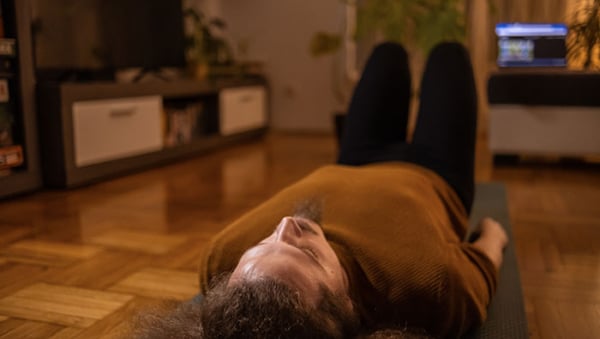Kegel Exercises for Men

Most men understand the benefits of regularly working out their bis and tris, but what about your pelvic floor muscles? While they can’t be flexed in the mirror, they pack a punch for your urinary health. That’s why Kegel exercises for men are so important.
Pelvic floor muscles support and surround the genital area. They perform critical functions, such as helping stop urine flow, preventing fecal incontinence, and improving sexual performance.
Regular strength training moves for these pelvic floor muscles are called Kegel exercises.
3 Kegel Workout Approaches for Men
Kegel exercises can be done anytime, anywhere; if done correctly, no one can tell you are doing them. Choose the best approach for you, or try alternating between all three.
The Chair Approach
- Position yourself comfortably in a chair.
- Squeeze your penis muscles as if trying to keep urine from leaking and hold for five seconds. (Tip: When urinating, try to stop the flow. If you can, you’re performing the exercise correctly.)
- Repeat eight to 10 times, relaxing the muscles between each squeeze. Perform three to five sets per day.
The Back Approach
- Lie on your back with your hands flat on the floor, knees bent and pointing upward.
- Using your pelvic muscles, try to draw your penis toward your body (inward) and hold for five seconds.
- Next, squeeze your anus as if trying to hold a bowel movement and hold for five seconds.
- Alternating, repeat both squeezes eight to 10 times, relaxing the muscles between each squeeze. Aim for three to five sets a day.
The Side Approach
- Lie on your side and place a pillow large enough between your knees to keep your legs apart.
- Squeeze your legs together and hold for five seconds.
- Repeat eight to 10 times, relaxing the muscles between each squeeze. Do three to five sets a day.
Tips for Performing Kegels Correctly
To ensure you are exercising correctly, keep these tips in mind:
- Don’t hold your breath while squeezing (it might help to count out loud).
- Don’t push down; pull the muscles together as if trying to lift something.
- Keep your stomach muscles relaxed.
- You should not feel pain while performing Kegels. If you do, stop the exercise and call a doctor.
If you have trouble doing your Kegel exercises, ask your healthcare provider for help. As you grow accustomed to these exercises, you can increase the length of time and repetitions. If the exercises are performed correctly, you should notice improvements after four to six weeks.
Alternate Treatment Options
Kegel exercises for men are a free, practical, and do-it-yourself way to strengthen pelvic floor muscles. But if you are looking for another option, the EMSELLA Chair may be right.
The EMSELLA Chair is an FDA-approved, noninvasive treatment for urinary incontinence. It uses high intensity focused electromagnetic (HIFEM) technology to stimulate the pelvic floor muscles, which is like performing 11,200 Kegel contractions in 30 minutes.
As the patient, you sit in the chair, fully clothed, for 30 minutes. A standard treatment plan includes six sessions scheduled twice per week. Treatments with the EMSELLA Chair are elective procedures not covered by insurance.
Your Unseen Pelvic Muscles Do a Lot – So Can Kegels
The bottom line is that your unseen pelvic muscles do much for your body. Find a workout approach that works for you and stick to it. Your bladder, bowels, and penis will thank you.
If you are experiencing symptoms related to urinary incontinence, enlarged prostate, or erectile dysfunction, schedule an appointment with a urologist near you today.

